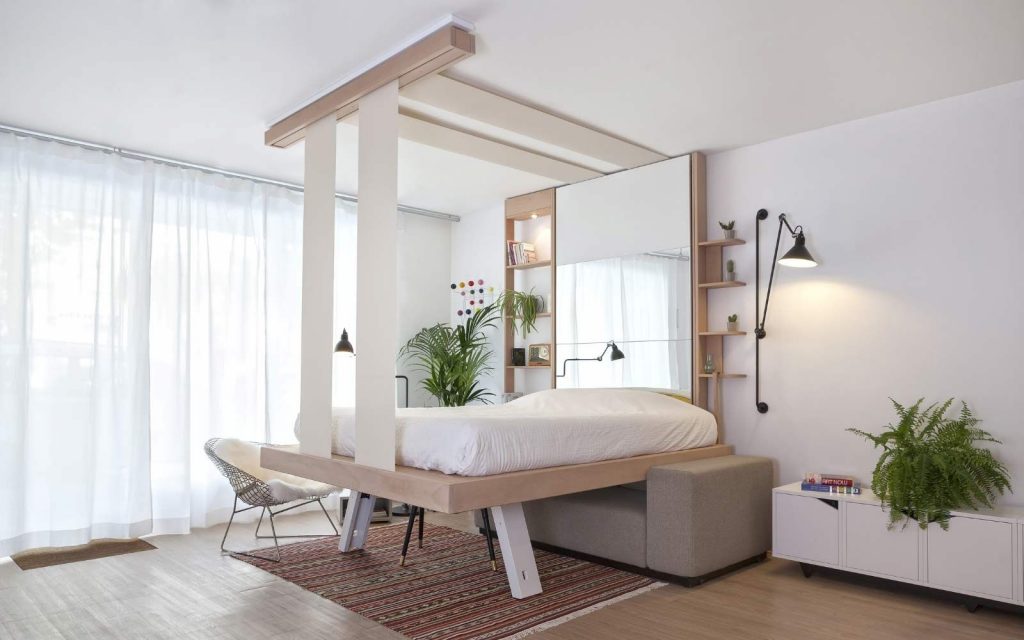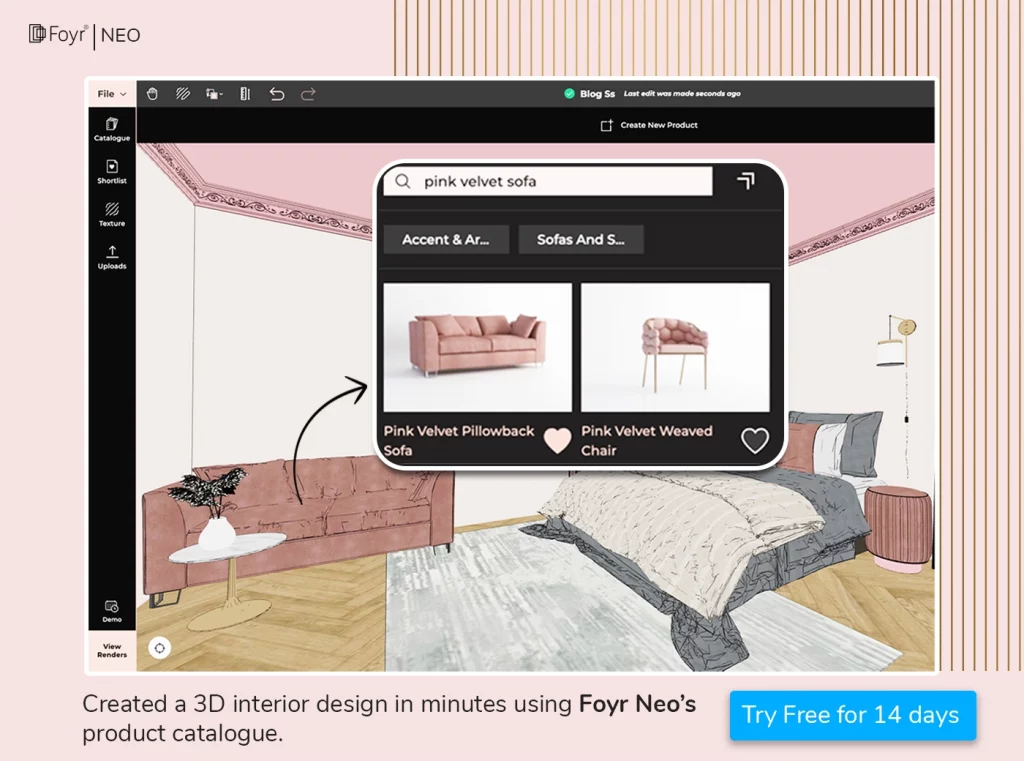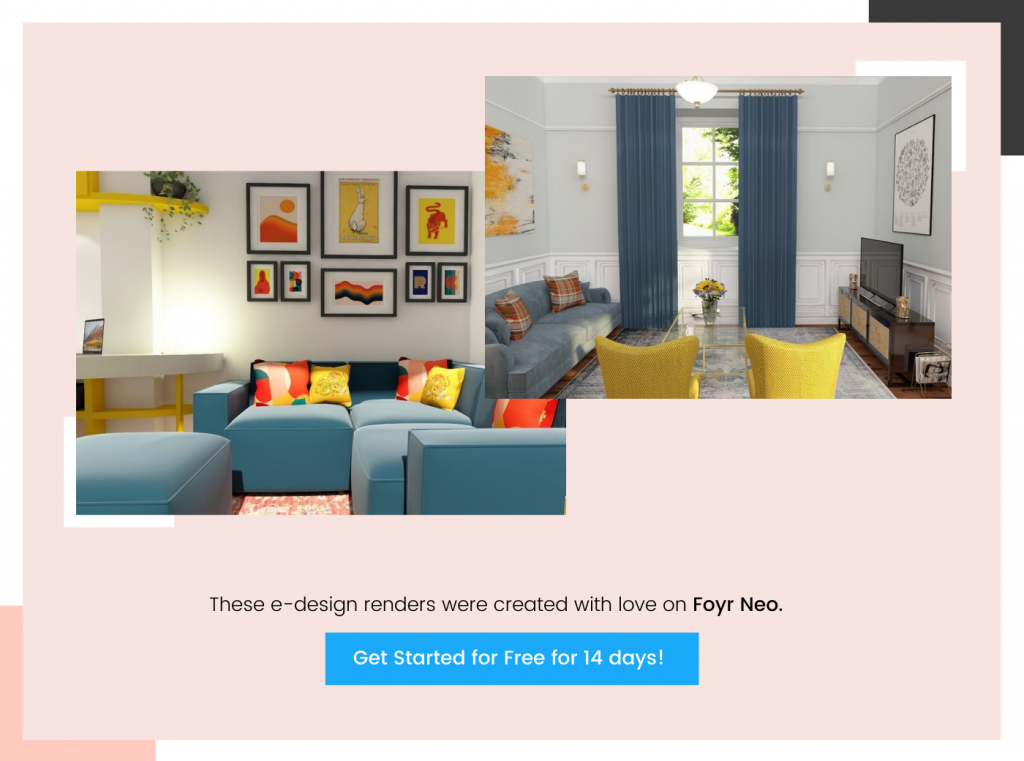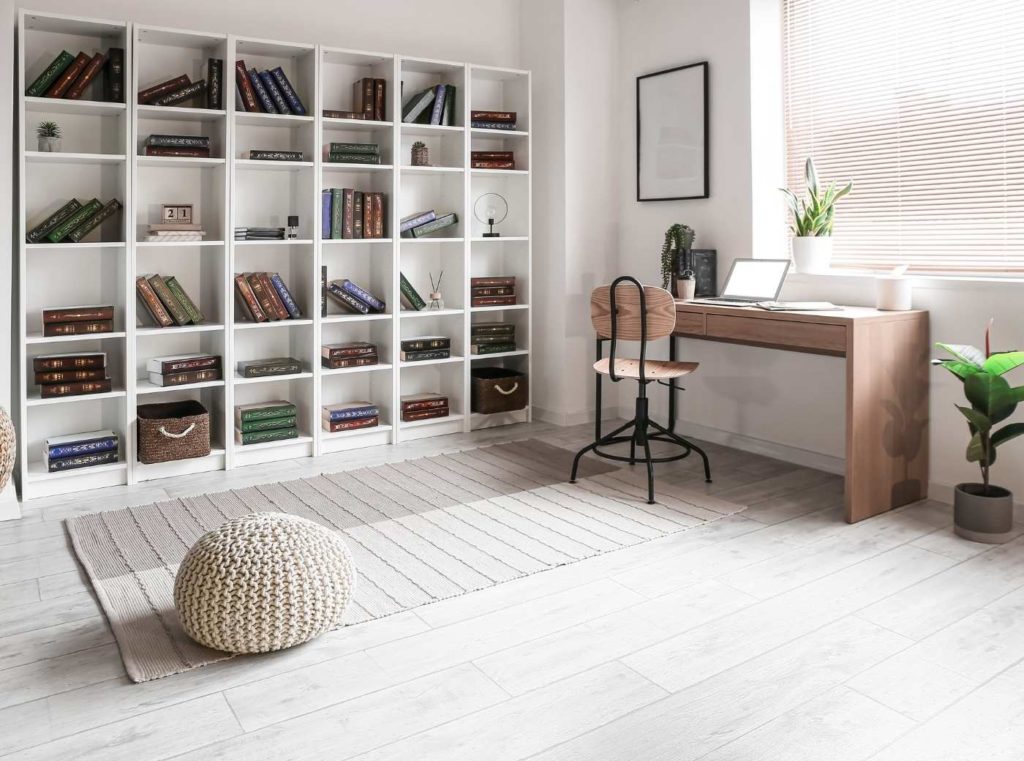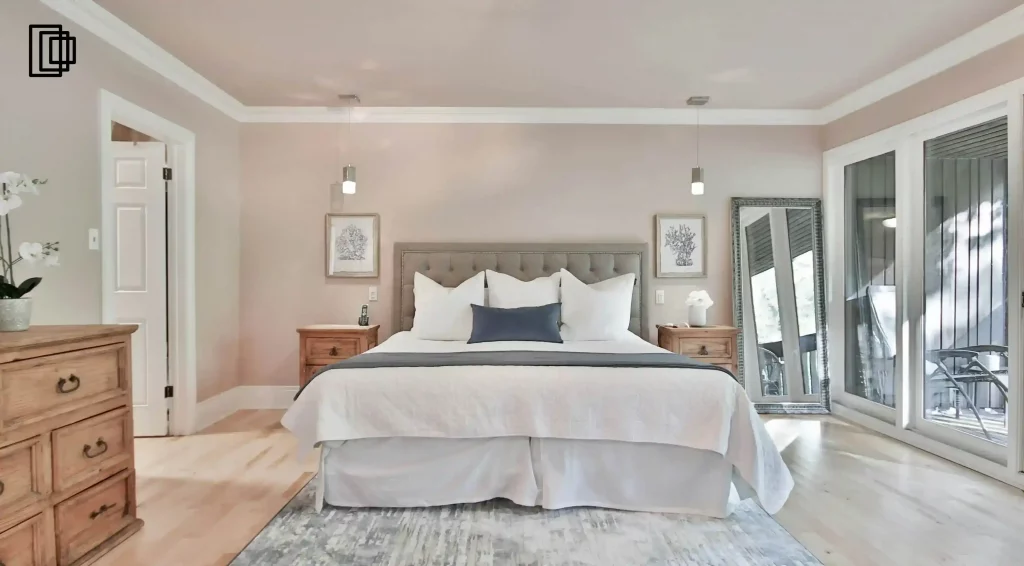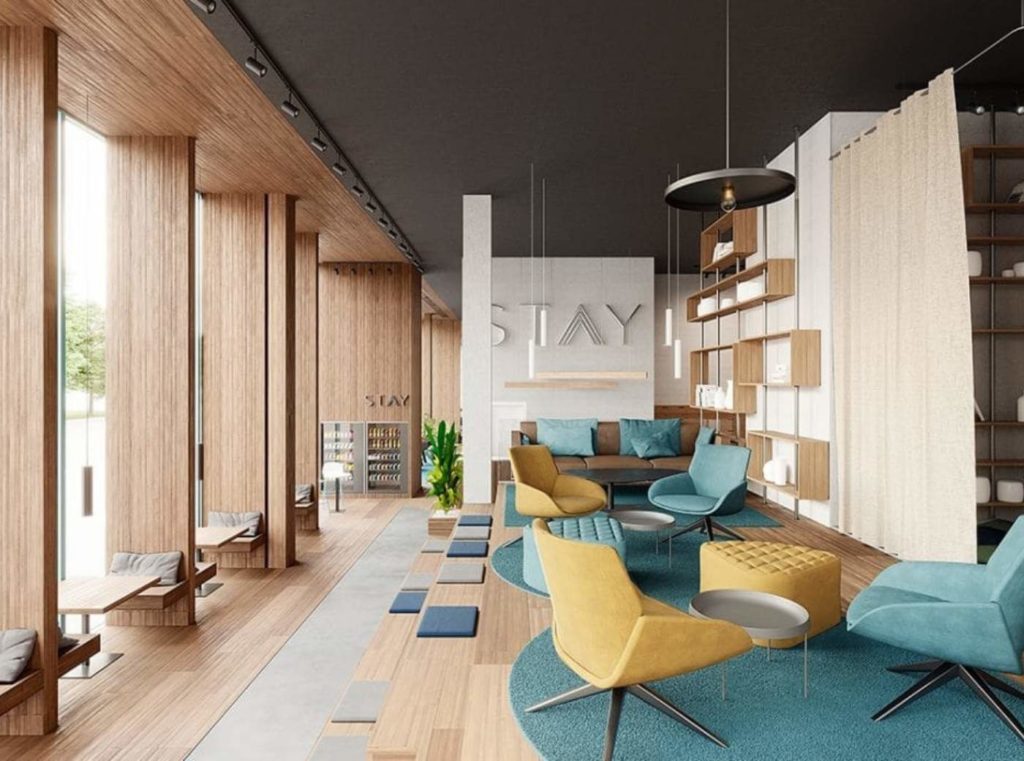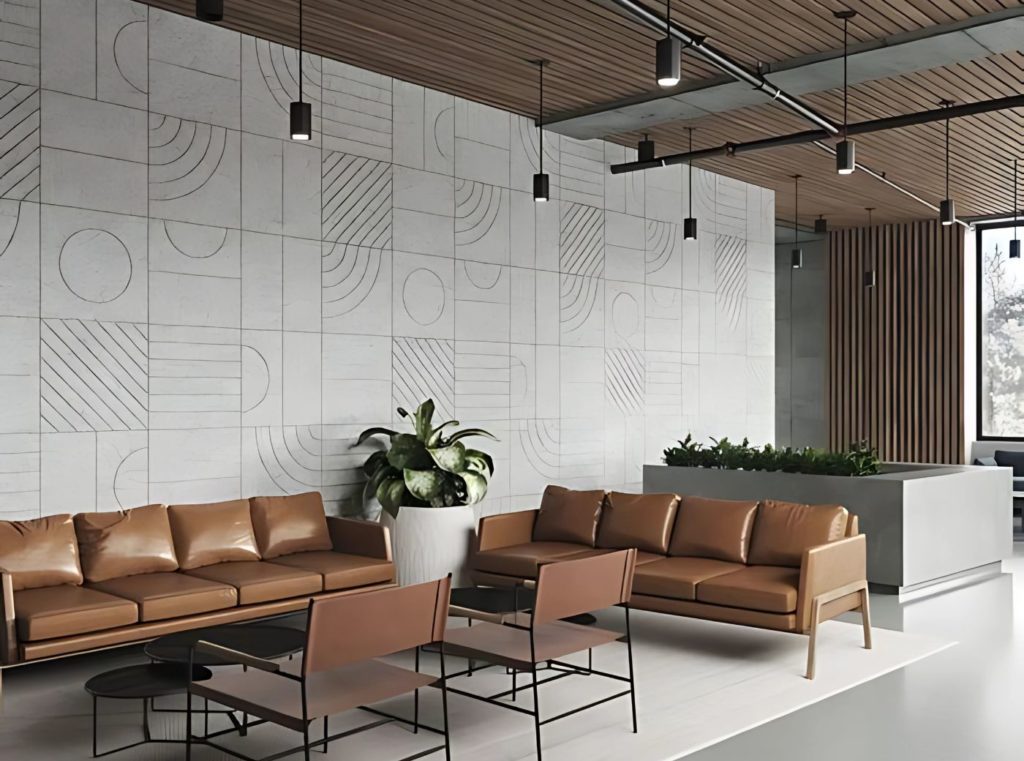Being environmentally conscious compared to its predecessors, the millennial generation has embraced a live-as-you-need philosophy. Tiny houses and small apartments have become popular with folks having a fixed budget in mind.
Adding to this is their desire to get quick results. Hence, it comes as a no-brainer that fast, easy-to-assemble furniture that is effective and functional has become a shot-selling topic. The rise of small-space living like studio apartments has directly led to furniture pieces that take up less space and offer maximum potential and functionality. Living in a small living space presents its own challenges, and arranging pieces of furniture in a small living room is one of the most puzzling tasks. Small living room ideas can feel like navigating through a maze. The need for walking space, and the equation becomes even more complex.
But a small living room doesn’t have to be cramped or cluttered. The importance of optimizing your living area lies not just in maximizing functionality—making every inch work for you—but also in enhancing aesthetics. With thoughtful decorating ideas and design tips, you can turn your tight living room into a welcoming, cozy haven that serves its purpose efficiently while reflecting your personal style.
Read on to discover tips for how to arrange furniture in a small living room and get set for a new transformation.
Assessing Your Space and Needs
Before diving into a small living room furniture arrangement, it’s crucial to understand the floor plan and utility of your narrow living room. Accurate measurements of your living room are essential, especially if your living room is part of an open-plan dining area.
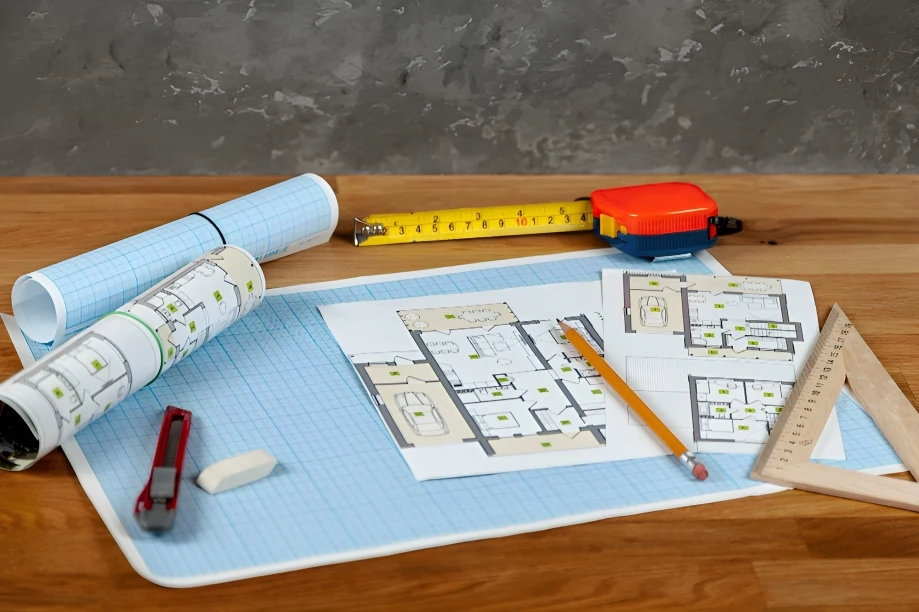
Room Measurements
Firstly, you can’t manage what you don’t measure. Accurate measurements of your living room are the backbone of any successful furniture arrangement. Without precise dimensions, you risk purchasing furniture that either swallows the room or looks awkwardly small.
Measure the length and width of your room, as well as the size of existing furniture pieces you plan to keep. Note down the dimensions of doors and windows, as these will affect your arrangement options.
Read also – 40 Best Online Furniture Stores To Shop Trendy Furniture
Identifying Needs
What’s the primary function of your living room design? Is it a space for entertaining guests, a relaxation haven, or a multi-functional area that includes a dining room? Understanding the intended use will help you decide which furniture pieces are non-negotiable.
For example, if you often host friends, a comfortable seating arrangement takes precedence. If relaxation is the aim, then you might prioritize a cozy armchair near table lamps.
Prioritizing Furniture
Once you’ve identified your needs, consider the essential furniture pieces that align with your lifestyle. Prioritize seating if your living room is the go-to place for movie nights or social gatherings. If it’s a space for relaxation, consider essential elements like a cozy recliner or a bookshelf. The goal is to invest in pieces that fit your space feel and serve their intended purpose effectively.
11 Space-saving Furniture Ideas
After you’ve assessed your space for a small living room furniture arrangement and identified your needs, the next logical step is to choose furniture that harmonizes with both.
1. Multi-Functional Pieces
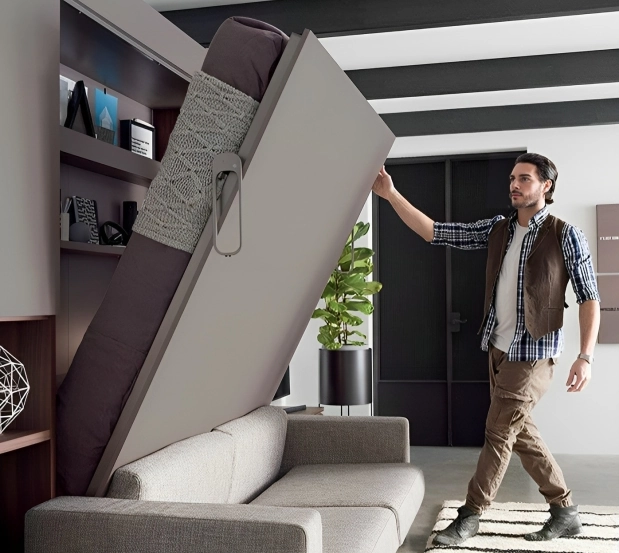
When square footage is at a premium, multi-functional pieces are your best friend. Opt for pieces and storage ottomans that reveal hidden storage or a sleeper sofa that can transform into a guest bed.
2. Countertop on Wheels with Seating
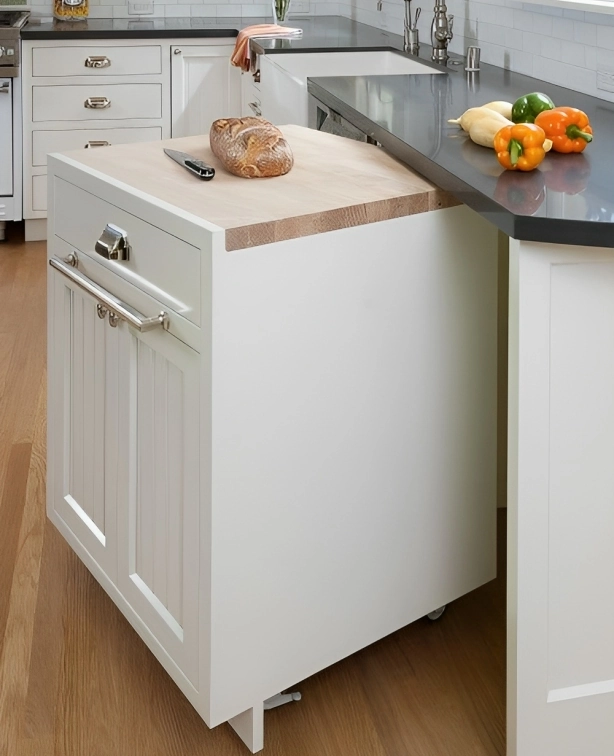
Countertop on wheels with seating has everything from drawers, cabinet space, counter space, and stools and can become an easy extension to any kitchen or act as a breakfast bar.
3. Hidden Storage Bench
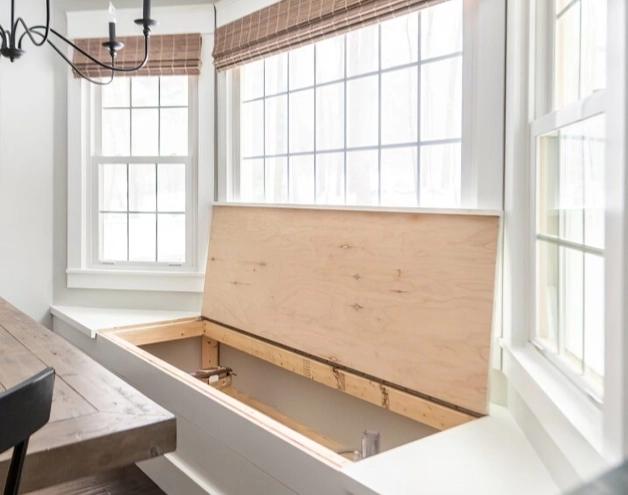
You can buy such benches from a host of online stores, and it is easily available locally as well. You can use the storage for anything you like, from linen to magazine collections.
4. Folding Wall Table

Let’s say you rarely use a dining table and think it would be a waste of space in the dining room. But what do you do when you have a couple of friends over? You can take a look at the folding wall table idea.
When in use, it folds out from the wall and folds right back in as well. You can also install a picture on the backside or the downside of the table so that when it’s tucked into the wall, it can look like art on the wall.
5. Rolling Storage Cart
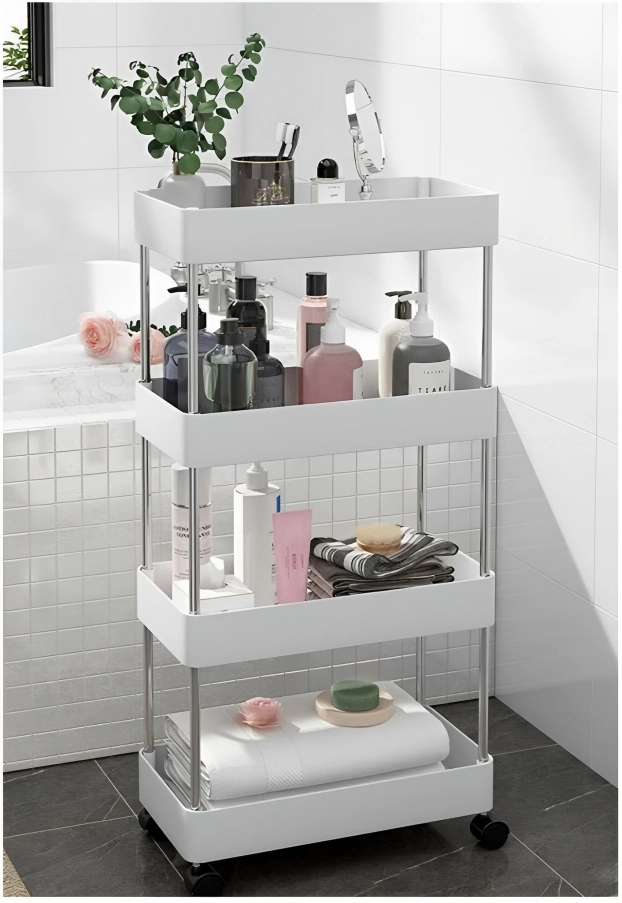
One can use the storage anywhere from holding spice bottles in the kitchen to having your toiletries arranged in your bathroom.
6. Mirror That Is Also a Hanger
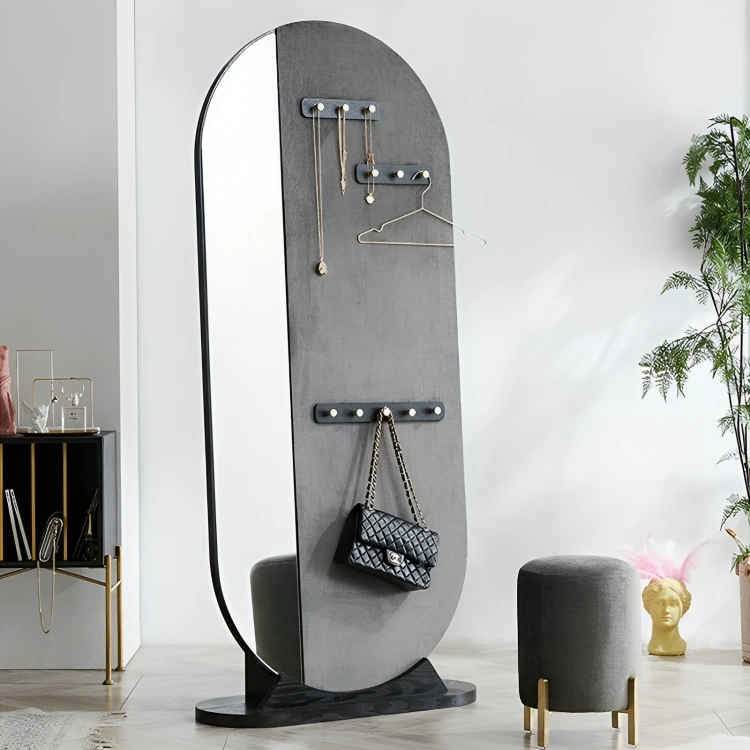
The mirror is a ladder that multi-functions as a mirror and a hanger. So you can try out your clothes and immediately see how it looks on you.
7. Compact Furniture
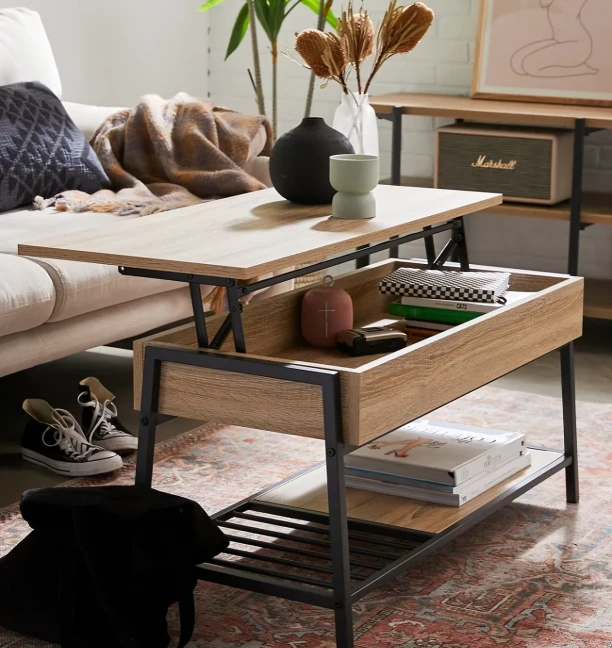
Size matters when it comes to choosing furniture for a small living room. Compact sofas, love seats, and accent chairs that align with your room’s color scheme can provide ample seating without overwhelming the space. Even a petite coffee table can serve its purpose without gobbling up valuable floor real estate.
When shopping, look for design ideas that offer comfort and utility without stretching the boundaries of your room.
8. Stairs with storage and drawers
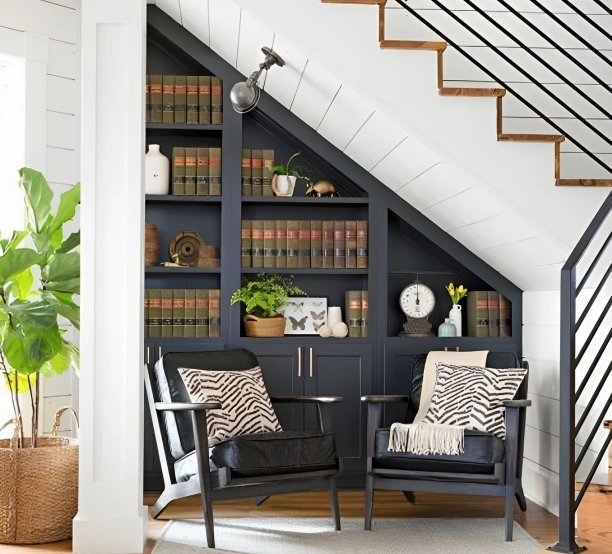
The staircase can double up as drawers and storage units underneath the stairs to save space in tiny apartments. You can also customize the teams to have open shelves to house planters for aesthetic effect.
9. Vertical Storage and Decor

You’ve navigated the complexities of furniture selection and placement, and your small living room already feels more functional and spacious. But what about those walls? Wall space is often overlooked, yet it holds the key to adding both storage and style in tight quarters. Here are some tips for leveraging vertical dimensions to your advantage.
Drawing the eye upwards can make a room feel taller and more spacious. One way to achieve this is through tall bookshelves near the ceiling or vertical artwork that fills up an otherwise empty wall. These elements can serve as both functional storage and eye-catching decor. Placing taller items against the walls can create vertical lines that offer the illusion of height and space.
10. Wall-mounted Shelves
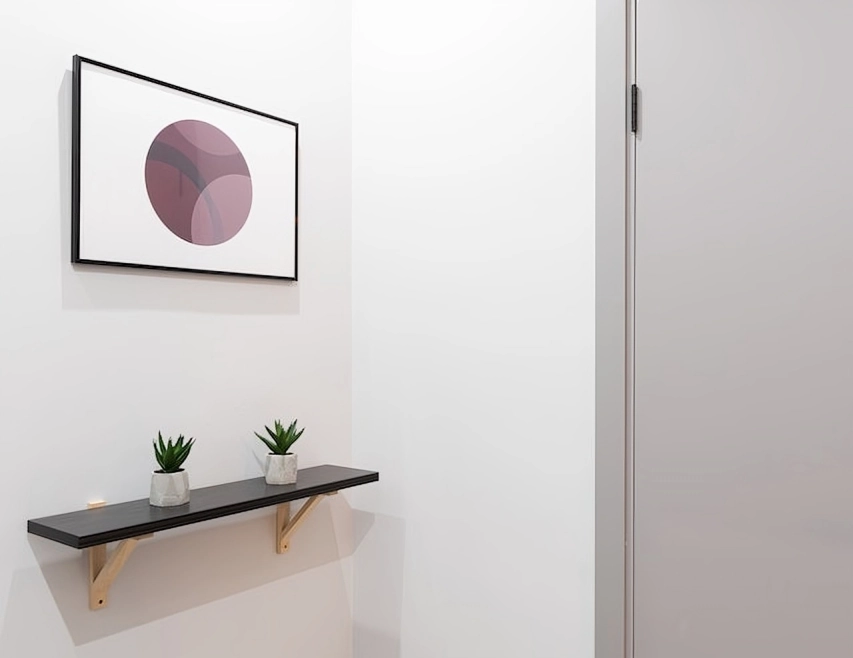
When floor space is limited, look up—literally. Wall-mounted shelves or sconces take up zero floor space and offer an excellent solution for storing home decor items, books, or other essentials. Position them above a sofa or a vacant wall to add function and aesthetics. Floating shelves, in particular, offer a sleek, minimalistic look that can make your living room appear less cluttered.
11. Mirror Magic
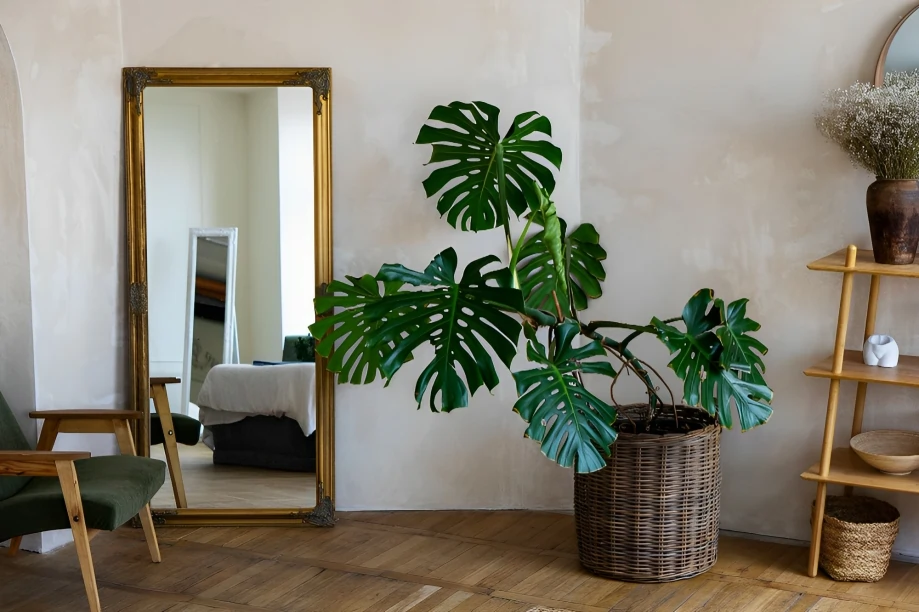
Mirrors are more than just functional items for checking your reflection; they can magically make a room feel larger and brighter. A strategically placed mirror can virtually expand your room by reflecting natural light and creating a sense of depth. Whether it’s a large mirror above the sofa or smaller framed ones grouped on a wall, they can substantially enhance your living space’s openness.
By embracing vertical storage and decor options, you add another layer of functionality and aesthetic appeal to your small living room.
Advantages of Space-saving Furniture
There are nothing but benefits when it comes to space-saving ideas. Rarely are there any complaints by customers who have opted to use modular and multi-functional furniture. However, three main reasons make a case for space-saving furniture, and rightly so.
Cost Efficiency
The target audience for space-saving furniture is folks who are regularly on the move and don’t want to be tied down with bulky furniture. For this reason, most space-saving items are made with MDF, a cheaper alternative to solid wood, which drives down costs drastically. Hence, it becomes the most cost-efficient and attractive option for this generation.
Same Space, Different Feel
How amazing is it when you are granted the power to change the very function of the room to suit your various needs? Every room can look different depending on how you want to use it at a particular time. You can convert a living into a bedroom with just a single pull of the sofa cum bed, or you can convert a bedroom into an informal open space playroom for kids with the help of a Murphy bed.
Read also – 14 Best Living Room Interior Design Ideas
Reduces Clutter
The organization is key to making your apartment look clean and tidy. The use of smart space-saving design with their concealed storage helps you consciously organize your items, thereby reducing the clutter we generally see in traditional homes.
Creating a Functional Layout
Now that you have chosen your furniture, it’s time to arrange it into a functional living room layout that meets your needs and optimizes the available space. Here’s how to effectively layout your furniture while keeping the room’s flow and aesthetic intact.
Center of Attention
Every room benefits from having a focal point—it’s what your eyes naturally draw to when you enter the space. In a living room, this could be a fireplace, a large window, or even a piece of statement art. Your furniture should be arranged to highlight this feature, creating a sense of balance and visual harmony.
Traffic Flow
It’s crucial to have a clear traffic flow for movement in the living room so that it’s easy to walk from one end to the other. Avoid placing furniture that blocks pathways or makes the room challenging to navigate. This also means leaving enough space around essential pieces like a chaise or sectional sofa, ensuring the room is comfortable and functional.
Read also – 10 Best Free Furniture Design Software
Zoning
In many modern homes, the living room serves multiple purposes: it’s a place to relax, entertain, and sometimes even work. Creating distinct zones within the space can help define these different uses. For instance, a seating area near the television might be separate from a reading nook by the window. You can define these zones using furniture placement or even area rugs to demarcate each section visually.
With these considerations in mind, you can create a layout that makes the best use of your small space and turns it into a cozy, multi-functional hub that meets all your needs.
Furniture Placement Strategies
Having chosen your furniture with space in mind and armed with a layout plan, the next endeavor is to position each piece in a way that amplifies the room’s functionality and aesthetic appeal. The placement strategy can often make or break the feel of the room. Let’s navigate some effective strategies for the most common pieces.
Sofa Placement
The sofa, often the largest furniture piece in a living room, commands attention. When your space is limited, you might think pushing it against a wall is the best option. While this can indeed create a sense of openness, don’t dismiss the idea of placing a sofa in the center.
A central sofa can divide the room into distinct zones, providing a clear separation of function. If you choose the center placement, ensure it doesn’t obstruct walking paths or the room’s focal point.
Coffee Table Solutions
A coffee table is a useful surface, but in a tight room, it might feel cumbersome. Opt for a compact design or consider oval or round tables, which often fit more naturally into small spaces.
If you feel a traditional coffee table is too much, consider alternatives like a C-table, which can be pulled up beside a sofa or chair, or nesting tables that can be spread out or stacked as needed.
Floating Furniture
“Floating” your furniture refers to moving pieces away from the walls, even if only by a few inches. Contrary to the belief that this shrinks space, it can create an illusion of depth and make the room feel less boxed.
This tactic, especially with pieces like sideboards or bookcases, offers a breezy feel while allowing easier access and cleaning.
Foyr Neo: Visualizing Furniture Arrangement
After all the planning and strategizing, you might still be unsure how everything will look in your small living room. This is where Foyr Neo, an interior design company, comes into play. It allows for virtual experimentation with furniture arrangement, enabling you to place different pieces in a simulated version of your room. This feature helps you to see how various options—from sofas to coffee tables—will fit and look in your space. Foyr Neo isn’t just about visualization; it’s also a tool for decision-making. The platform makes it easy to swap out different furniture options, helping you make more informed choices about what to include in your living area. Whether you’re torn between a traditional coffee table or considering more innovative alternatives, the platform provides a risk-free way to try before you buy.
The efficiency and precision that Foyr Neo offers are particularly beneficial for small spaces where every inch counts. The platform can help optimize furniture placement for maximum functionality without compromising aesthetics. By removing the guesswork from the equation, Foyr Neo streamlines the entire design process, making it easier to transform your compact living room into a stylish and functional haven.
Navigating the challenges of a small living room may seem daunting, but as we’ve explored, strategic planning and smart furniture selection can turn any cramped space into a functional, stylish sanctuary. Each step contributes to creating a harmonious living environment, from meticulously measuring your room and selecting space-saving furniture to optimizing layout and employing vertical decor strategies.
Transform your small side of the living area into a cozy, functional space with innovative decorating ideas and home decor elements. For detailed planning, give Foyr Neo’s virtual furniture arrangement tool a try to visualize your dream space before committing to any changes. Transform your living room sign up for Foyr Neo’s 14-day free trial today!
FAQs
To make furniture fit in a small living room, focus on selecting multi-functional, compact pieces and arranging them to optimize flow and functionality while maximizing vertical space.
Use space-saving options like corner sofas and armless chairs to maximize seating in a small living room. Consider multi-functional pieces like ottomans that double as extra seats when needed.
In a small rectangular living room, place key pieces like the sofa along the longer wall to create a sense of width. Utilize corners for additional seating or storage, and keep a clear walking path to maximize flow and functionality.
To make your small living room look nice, focus on a light color palette, multi-functional furniture, and vertical storage. Add mirrors to create a sense of depth, and use textured fabrics for a cozy, layered look.
To stage a small living room, declutter the space and use neutral colors to create a light, airy feel. Opt for scaled-down, versatile furniture and strategically place mirrors and lighting to enhance openness.


